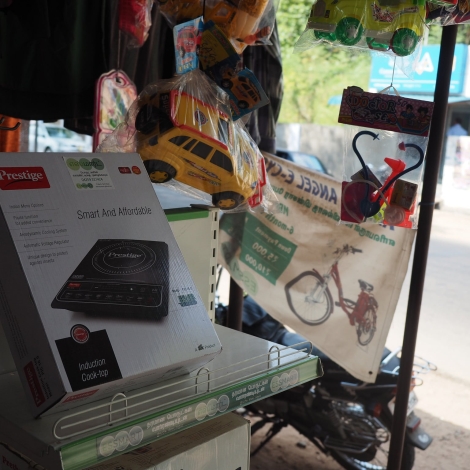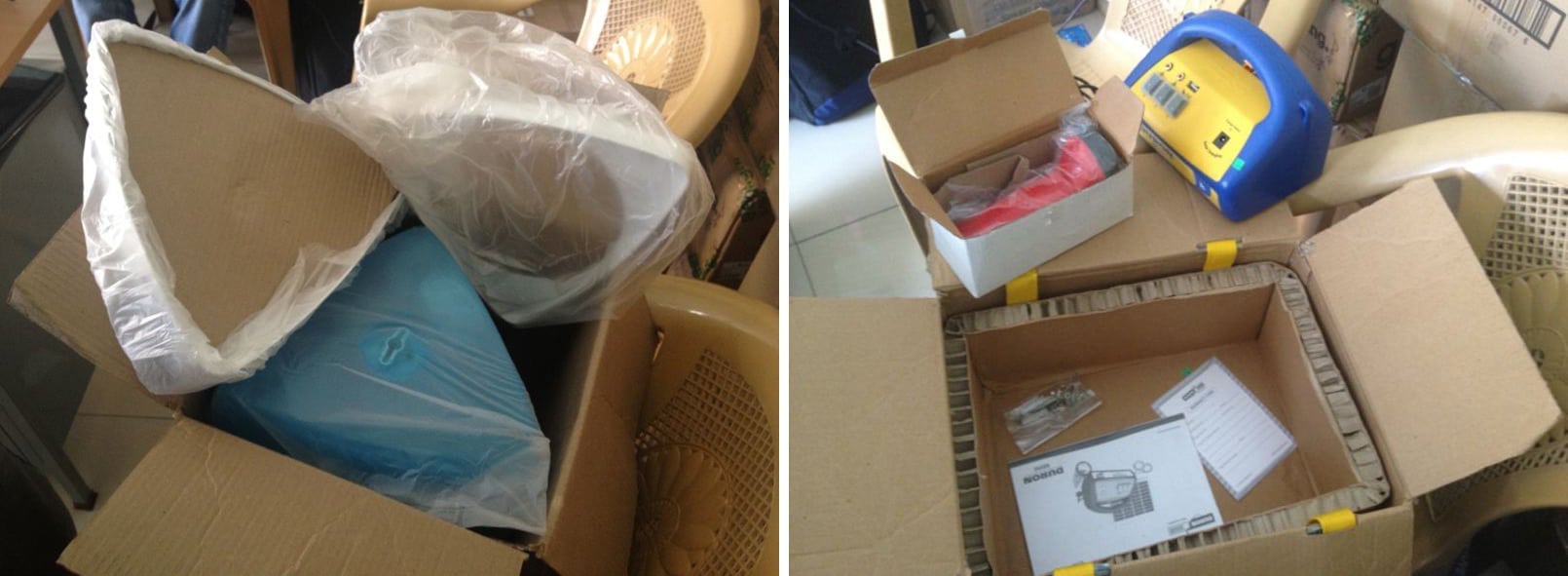Product designers like to use my network of retail stores in southern India to test how well their new creations will sell. I’m the co-founder of a company called Essmart that distributes life-improving technology, and our stores attract engineers and inventors with late-stage prototypes to test. We ask them what price they would like to charge the consumer and the designers name a price. Then we ask what is the cost of manufacturing the product. Too often, we discover that this cost is not much lower than the retail price.
Inexperienced designers tend to assume that their products for low-income consumers can be sold at a price just above their cost of manufacturing. It’s as if they do not take into account the expenses borne and profits earned by other players in the supply chain. The people who are moving these products from the factory to the faraway store shelves must be properly motivated to carry the goods over the last mile.
Packaging also matters. See Good products are designed well but successful products are designed to sell.
Who are the other players in the supply chain? This depends on whether you choose a nonprofit or commercial distribution for your product. If you go the nonprofit route, the other players are probably a charity that buys from you in bulk and offers the technology to consumers at a subsidized rate, or even for free. If you choose the commercial route, the other players can include door-to-door networks of sales agents and, as in the case of Essmart, a wholesale distributorship to pre-existing retail shops (or other types of networks).
We at Essmart recommend that you consider the commercial route. The benefits of this distribution method is that if you make a great product and offer it at the right price, and if you have a proper ecosystem for distribution (that is, with adequate marketing, physical movement of goods, and after-sales service), you’ll make a big impact with the potential to scale up.
Whatever your distribution model, as you work with the other players to reach your customers, you must remember that everyone needs incentives to sell your product. To that end, Essmart has learned a few things that can help.
Need help with distribution? See Seven expert tips to help your invention succeed where others fail: Distribution.
All distributors face a working capital problem
This is particularly true for durable products such as solar lanterns and water filters. They are expensive and slow-moving inventory to hold. Whoever buys and stocks the products is banking on actually selling them to someone else. This is a risky proposition when it comes to new and innovative technologies that customers do not yet know about.
Since Essmart is a pipeline for new technology, we face this problem for most of the products in our catalogue. We’ve had suppliers try to sell us products in minimum orders of 1000 pieces, which we would have to purchase upfront in cash. Sure, this works out great for the supplier; it takes products out of their factories or warehouses and immediately covers their manufacturing costs. But quantities of 1000 for us are impossible, especially if this is a brand new product for our peri-urban and rural south Indian customers. Our retail shops wouldn’t want to stock the products either, since they have no clue if the products will sell.
Fortunately, there are a few ways for technology designers to address this problem. But the extent to which these methods can be used depends on how much money you have in the bank. Some of our larger suppliers offer us credit for products, which has been helpful and has helped us push sales. With other suppliers, we’ve worked out buy-back plans. That means that the supplier buys back the products that don’t sell, usually paying a percentage of the original cost. This decreases the risk of holding the products in our distribution centers, and provides a greater incentive to retail shops to have products in stock. Cost-sharing efforts like these also help out door-to-door salespeople, who often lack large amounts of working capital to buy inventory.
For distributors like Essmart, there are ideas out there on how to support our own financing. A good friend of Essmart, Daniel Tomlinson, has been writing about how solar companies and lenders can make better use of capital and investment in the energy access space. Take a read and see what you can implement in your situation.
Margins matter to the retailer and last-mile salesperson
The person who makes the final sale to the customer, whether he or she is a rural shopkeeper or a door-to-door salesperson, has to make money on the transaction. It is crucial to know how low these margins can be while still motivating the salesperson to push your product. Find out what this salesperson’s other income-earning options are. If he or she sells other products, find out what those earnings are and try to match it. If he or she came from a different line of work, find out what those earnings were and ensure that you can provide more through your product sales. I’ve seen situations where the pay given to a salesperson wasn’t high enough for him to maintain interest, so he altogether stopped purchasing inventory and selling products for a particular supplier.
We’ve also learned that the customers’ behaviors affect the margins that shops can earn on durable technology products. In our south Indian context, products are sold at or below a Maximum Retail Price, or MRP. Most customers believe that all of the supply chain’s middlemen are already taking hefty cuts that artificially inflate the MRP. Thus, they generally ask for some discount off of that price. In general, we want suppliers to be able to offer us at least 30 percent off of the MRP so that we can account for this type of customer behavior and cover our distribution expenses. As you’re designing for a particularly market, try to learn your customers’ buying behaviors that would also affect retail price.
Supply chain partners can offer additional value
You probably can’t cut costs enough to offer your sales force large margins until you’ve reached economies of scale. Fortunately, last-mile distributors and retail salespeople have other issues that you can help address. With the right amount of ingenuity and planning, you may land on a solution that’s cost-effective, too.
As I’ve mentioned before, professional-looking marketing materials, in-person demonstrations, near-last-mile distribution to stores, and after-sales service all help your supply chain partners. If you, as a supplier, can offer some of those solutions then you will motivate salespeople to sell your product instead of comparable products.
For example, the close relationship that we had with Tata to sell the Swach carbon water filter ensured that we could easily exchange faulty products for new ones and that we would have access to replacement water filtration cartridges. One shop that we work with actually stopped selling a competing product because none of its customers could reach the supplier through a toll free number listed on the product’s box. In contrast, if something went wrong with a Swach, the problem could be addressed immediately through Essmart’s team and Tata’s manufacturing warranty. This is attributed not just to Essmart’s local presence but also to Tata’s smooth working relationship with us.
Marketing materials are also a great boost. One India-based solar lighting company was able to provide a demonstration booth to us, and another was able to provide special customer offers for Diwali, a holiday that marks one of India’s biggest shopping seasons. Efforts like those have motivated us to continue selling their products through our retail shops.
Ultimately, when suppliers share costs and effort with members of the supply chain, it demonstrates that we’re all working together to sell products, instead of merely trying to move products onto someone else down the chain. It’s these types of respectful partnerships that will get your products out over the last mile.

